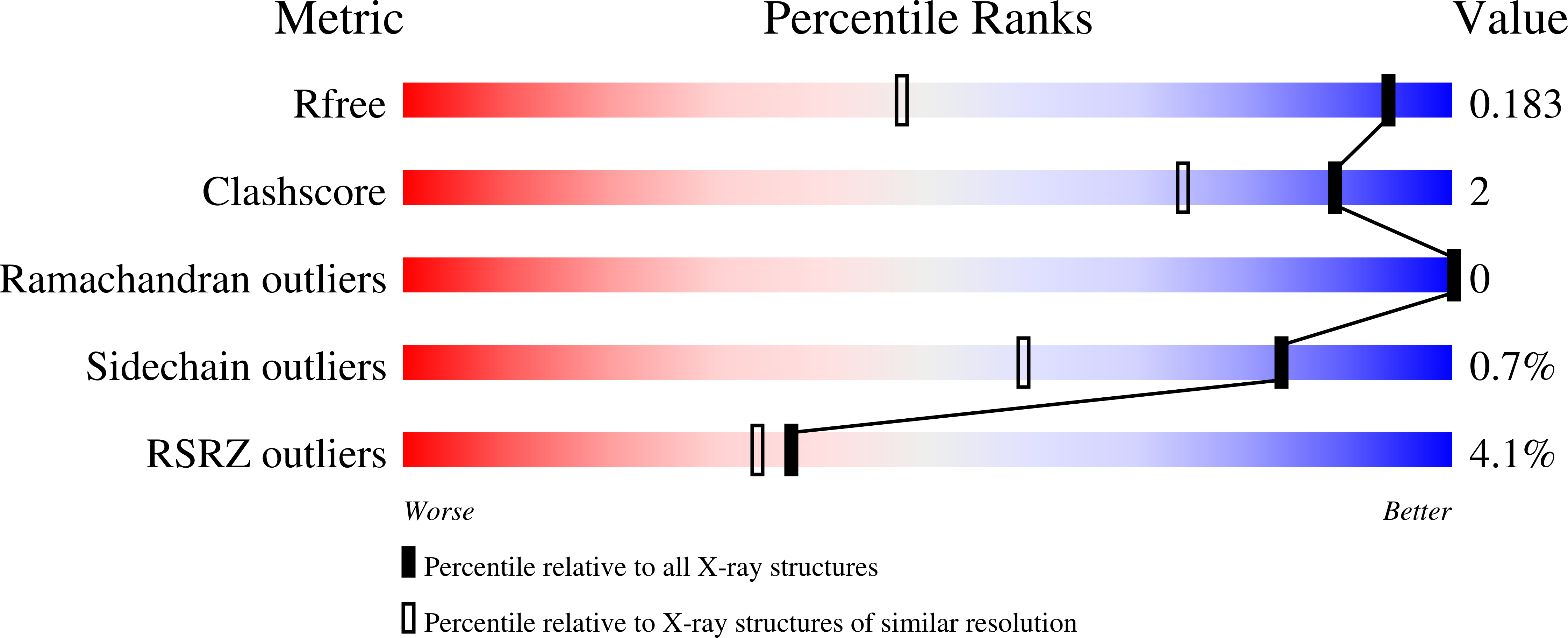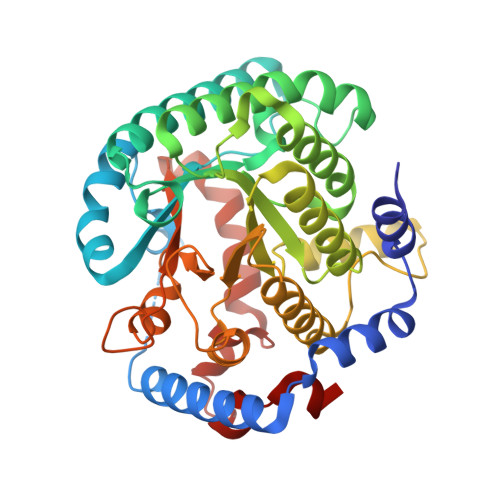Structure-based engineering of minimal proline dehydrogenase domains for inhibitor discovery.
Bogner, A.N., Ji, J., Tanner, J.J.(2022) Protein Eng Des Sel 35
- PubMed: 36448708
- DOI: https://doi.org/10.1093/protein/gzac016
- Primary Citation of Related Structures:
8DKO, 8DKP, 8DKQ - PubMed Abstract:
Proline dehydrogenase (PRODH) catalyzes the FAD-dependent oxidation of l-proline to ¦¤1-pyrroline-5-carboxylate and is a target for inhibitor discovery because of its importance in cancer cell metabolism. Because human PRODH is challenging to purify, the PRODH domains of the bacterial bifunctional enzyme proline utilization A (PutA) have been used for inhibitor development. These systems have limitations due to large polypeptide chain length, conformational flexibility and the presence of domains unrelated to PRODH activity. Herein, we report the engineering of minimal PRODH domains for inhibitor discovery. The best designs contain one-third of the 1233-residue PutA from Sinorhizobium meliloti and include a linker that replaces the PutA ¦Á-domain. The minimal PRODHs exhibit near wild-type enzymatic activity and are susceptible to known inhibitors and inactivators. Crystal structures of minimal PRODHs inhibited by S-(-)-tetrahydro-2-furoic acid and 2-(furan-2-yl)acetic acid were determined at 1.23 and 1.72?? resolution. Minimal PRODHs should be useful in chemical probe discovery.
Organizational Affiliation:
Department of Biochemistry, University of Missouri, Columbia, MO 65211, USA.


















